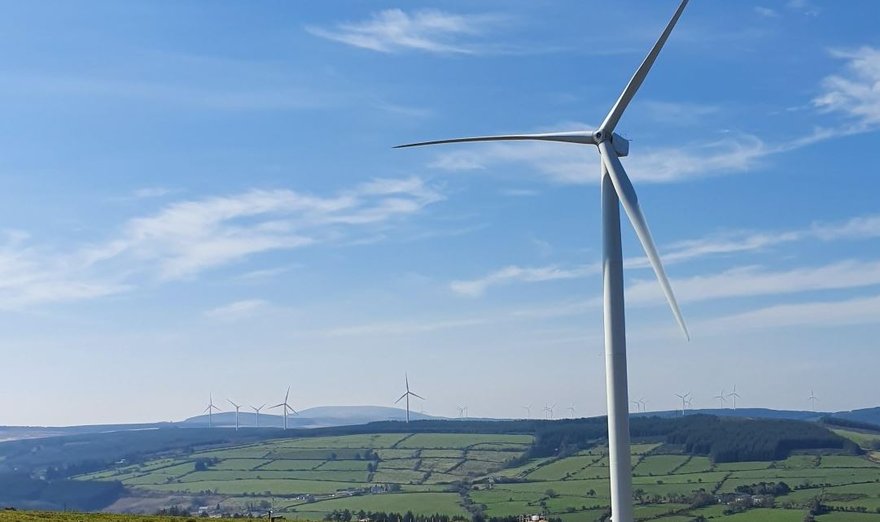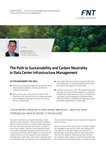Data centers and other digital infrastructure such as cell towers and subsea cables require huge amounts of capital investment. They often rely on credit, loans, and bonds to help cover much of the upfront costs of these expensive projects.
At the same time, many digital infrastructure firms are looking to become more sustainable and make climate commitments, joining various pledges and initiatives.
That’s a good start, but some companies are going a step further and tying their finance directly to sustainable projects and ESG targets.
Green Bonds and Sustainability Linked Loans (SLLs) force companies to spend their money on environmental projects and impose financial penalties for failing to meet their stated goals. They sometimes come with tax incentives.
Sustainable financing in digital infrastructure : What are Green Bonds and Sustainability-Linked Loans?
In the data center and cloud space, companies including Equinix, Digital Realty, Nabiax, Atos, Baidu, AirTrunk, and Penta Infra have all jumped into sustainable financing, raising new funds or shifting existing debt to packages focused on green projects or with interest rates tied to sustainability and ESG goals. Telcos KPN, Telefonica, NTT, and Verizon, as well as industry vendors including Johnson Controls have also adopted this approach.
In December 2021, Flexential completed a new $2.1 billion securitization offering. The company said it was the largest single asset-backed securities (ABS) issuance to date in the data center industry, with the notes issued under its Green Finance Framework, which requires any new-build data centers funded through the offering to demonstrate a power usage effectiveness (PUE) of 1.4 or below, as well as zero water usage in cooling to be included under the framework.
Chris Downie, CEO of Flexential, tells DCD the funding was the first time the company was able to formally tie its sustainable ethos to capital investment.
“We're using the loan to support the development of our data center platform,” he “With a ‘legacy’ debt format, you don't really make any commitments relative to sustainability, and in this vehicle, we had the opportunity to effectively link our facilities to sustainability outcomes that we're looking to deliver.
“We're making a bit of a social contract, if you will, to do our part; to demonstrate we'll be responsible in the consumption of the raw materials that we use to run our business. We've made a multi-year, if not multi-decade, commitment here and it's going to be something that you're going to be able to come back to us in a year plus and say, ‘How did you do? Where are you on this?’”
Sustainable financing can broadly be categorized into two buckets. Green Bonds are use-of-proceeds financing, where money is raised for a particular goal or goals; funds raised will be spent on sustainability projects such as installing solar panels at facilities or making power purchase agreements to procure renewable energy.
The other bucket, sustainability-linked loans (SLLs), are more flexible business loans with interest rates tied to particular ESG goals. The business can spend the money how it likes, but pays an interest rate tied to a particular metric such as PUE targets, carbon emissions, or water use. The more targets a company achieves, the lower its interest rates will be.
Sometimes the two can be linked, with Green Bonds taken out to fund projects that will help a company reach wider ESG
targets defined under SLLs.
“The upside (to SLLs) is that there's no limitation on the size, you're not tying it to specific proceeds,” says Dan Shurey, director of sustainable finance at ING, which has worked on a number of these raises. “But there's the risk that they might not meet those KPIs, and therefore, cost of financing will become more expensive for them.”
In 2020 Aligned took out an SLL, raising $1 billion for sustainability initiatives and general expansion, with the interest rate tied to sustainability goals. The company added a further $250 million in July 2021 after hitting its previous targets, before adding another $375 million later in the year. The company has also issued $1.35 billion in securitized notes under its sustainability framework. It has since extended its SLL credit facility by a further $1 billion since this piece was published in DCD Magazine.
“We started on the sustainability linked loan piece, as we thought it was more impactful for our first foray into it,” says Aligned’s CFO Anubhav Raj. “Sustainability has been at the core of our company's DNA from its origins. However, we challenged ourselves and asked 'how do we more directly tie sustainability into our financing? As opposed to just saying that we are a sustainable company, how do we go to specific KPIs?'”
Investors and customers want sustainable financing
Green bonds are not new. Dating back to 2007, they were traditionally used by utility and energy companies to fund large-scale projects. As sustainability issues come to the fore, companies of all stripes have looked to them to raise money that goes directly to green projects.
SLLs are newer, and offer a way for companies to tie environmental goals to their bottom line. Aligned’s Raj says the primary drivers for choosing sustainable financing are investor interest, customer demand, and employee retention.
“This is valuable from an employee retention and recruiting standpoint. Making investments in this space and trying to be at the forefront within our industry, will help us retain and attract top talent in this space. Investors want these type of financing products that incentivize the right behavior.
“When there are significant dollars behind it, it does drive the business; you can't just put it off until next year when there are actual teeth and benefits of getting it done this year.”
Flexential’s Downie adds: “Raising capital is something that we've been doing year on year to support the growth of our business, and ultimately this enables us to demonstrate to our customers that we're putting our money where our mouth is.”
Parties funding sustainable bonds or loans span the spectrum, including traditional infrastructure-focused funds, as well as more ESG-focused investors and the ESG desks of larger investment companies.
The move doesn’t just let data center companies show green credentials. They actually open up a potentially new selection of ESG-focused investors that previously may not have considered funding digital infrastructure.
Mark Richards, partner and regional practice group leader - energy, environment and infrastructure at law firm BCLP, tells DCD that private equity infrastructure companies are very sophisticated in their approach to ESG and these types of funding mechanisms. Likewise, companies like hyperscalers are very sophisticated in how they raise capital.
He notes that real estate investors are “coming up to speed and catching up quickly” on ESG and are often “very savvy” when it comes to ensuring they get the best cost of capital for financing.
“The quantity, as well as the quality, of conversations that we're having is increasing,” says Aligned’s Raj. “[Compared to our 2020 raise], there were more institutions that had done sustainability-linked loans and were more familiar with it in the conversations I had last year.
“Investors’ partners are requiring that a certain percentage of their overall allocations be dedicated to green loans, sustainability-linked loans, things that check that box.”
When sustainable financing make sense
BCLP’s Richards says SLLs may make the most sense for companies that are looking for long-term stable financing platforms: “You've got to a point where you're looking at a much longer-term and you're looking to also lock in some good financing. These ESG financing packages benefit from much longer strategic perspectives in terms of compliance with the data collection and other requirements.”
It’s not for everyone, he says: “If you're in the development phase, where you're growing fast and you're breaking things, that [type of] financing may be less relevant.”
If companies want finance quickly, without sophisticated ESG audits and compliance and due diligence, he says, “I suspect that green finance is not the ideal solution to start with a capital raising journey.”
ING’s Shurey says green finance is a collaborative process: “We'll speak to the financial team, and the sustainability team, as well as engineering, operations, legal, communications, accounting.
“We have found that is an incredible value-add for a company, even if they never actually go ahead with a capital raise,” he adds. Sometimes we're putting together groups within the business that have never spoken before.
“We would ask the engineers; are you thinking about water usage? Are you thinking about PUE? Do you have guidelines within your architectural blueprint for what you expect the PUE to be? Are you working with LEED, for example, to obtain a green building certification?
“We try and push the maximum feasible threshold that the company can achieve within a five or 10-year plan, so the company is going beyond business as usual, but it's doing so in a way that it's actually going to be able to achieve.”
Green Finance Frameworks: The green playbook
ESG reports often outline sustainability targets alongside current projects and progress.
Green finance frameworks outline the company’s sustainability goals and define the projects it considers suitable to helping them towards those targets, and therefore suitable for financing under green bonds.
Funds raised via green bonds should go towards projects outlined in the framework, and should be allocated (though not necessarily spent) within a certain timeframe, usually a year. After that, there’s no requirement for ongoing reporting of the bond’s use, though much of it would be going towards projects likely included in any ESG report.
For SLLs, companies have to report progress against stated targets annually, which are then audited by third parties. After that, depending on the results, the pricing levers get put into place for the next year.
Flexential developed its framework by first creating an ESG committee consisting of cross-functional leaders in the organization that are responsible for the different components that together impact its sustainability objectives. Downie says the committee meets regularly to ensure the integrity of the framework and ensures the company has an internal process to ensure that it’s meeting its green commitments as it deploys capital.
“It is a living and breathing framework,” he says.
The International Capital Market Association (ICMA) has published its Green Bond Principles – as well as Sustainability-Linked Bond and Sustainability Bond principles – that provide guidelines and recommendations around structuring features, disclosure, and reporting for sustainable financing vehicles.
First published in 2014, they were last updated in 2021. Companies including Digital Realty, Equinix, Verizon, and Aligned have made their frameworks available online.
Frameworks outline key sustainability goals, the types of projects the company will be using the proceeds towards, and processes for determining eligibility, reporting and auditing.
As well as the likes of ING, external third parties such as SustainedAnalytics will assess the company and its green frameworks to determine its suitability for raising money through green bonds and SLL.
“We had to meet those foundational elements,” says Downie, “but I'm sure those will evolve over time and we'll need to ensure that we continue to monitor those [goals].”
Setting sustainable loan targets
Different companies use different SLL targets. Many will cross over with targets outlined in the Green Finance Frameworks, and proceeds will be used towards those goals in conjunction with proceeds from green bonds.
Nabiax’s included the percentage of renewable electricity, water consumption (m3 per MW), and a target for hiring more women in the workplace. Atos will pay less if it reduces its annual greenhouse gas emissions (Scopes 1, 2, & 3) by 50 percent in 2025 compared to 2019.
“I always recommend that companies use very specific KPIs that can be measurable,” says ING’s Shurey. “We found that it's most effective to use things like an absolute greenhouse gas (GHG) or carbon equivalent number, or an intensity-based number.
He says, “renewable energy and PUE are all trying to do the same thing which is reducing carbon emissions. Therefore, you should focus on the most effective way of demonstrating that, which is tons of carbon or tons of carbon per revenue or whatever the intensity-based metric may be.
“We also want to make sure that the targets that they set off those KPIs are meaningful, that they are benchmarkable so they can compare them to their peers, if possible, and that they are ambitious. We typically ask clients for at least three KPIs, but we prefer five KPIs, and we also encourage companies to align their decarbonization
“We also want to make sure that the targets that they set off those KPIs are meaningful, that they are benchmarkable so they can compare them to their peers, if possible, and that they are ambitious. We typically ask clients for at least three KPIs, but we prefer five KPIs, and we also encourage companies to align their decarbonization While companies can pick their own targets, they need to be sure to choose goals that are ambitious, otherwise investors won’t be interested - especially if competitors with grander targets are seeking financing at the same time."
Raj says Aligned’s KPIs are designed to be impactful and go beyond table stakes, and tell a story of how this works.
“We focus on safety within our projects, and so when we were selecting the target for safety, we started with ‘we’re less than the median from a total recordable incident rate standpoint,’” he says. “Our sustainability advisor ING said that's not aggressive enough of a target, so we revised it to be in the top quartile in order to get an interest rate and savings.
“There's a balance and that's an example of one where it's in our best interest to have targets that are not just the status quo. But I don't want to sign up for something that I think there's no chance I'm going to be able to achieve; I would not be doing my job if I just sign up for extremely low probability stretch goals.
“The bar is going to continuously be set higher and higher, which is a good thing. What wasn't table stakes two years ago when we set our first SLL target may be viewed as such five years from now, so it's going to change.”
How hard some of those targets will get in the future is unclear. Gains through PPAs and PUE reduction can only go so far, but many of the people DCD spoke to for this piece suggest they’ll still be there.
Goals will be broken down into smaller targets, such as GHG emissions, rather than resorting to all-encompassing single targets such as becoming carbon neutral or negative.
This is partly due to the fact such binary long-term goals would still need yearly targets for companies to be measured against in order to re-set interest rates on long-term ESG-linked loans.
Paying the penalties: putting green money where it matters
The benefit of SLLs versus merely putting out ESG reports and making pledges is that if you fail to meet your stated goals, there’s a financial penalty.
None of the companies DCD spoke to said they had yet failed to meet their SLL goals – Aligned publicly said it extended its SLL facility after meeting its original 2020 goals – and seem comfortable with the risk it has taken on.
It’s not necessarily about profit for the banks either: BCLP’s Richards claims he’s seen one example where if a company fails to meet its SLL targets, the additional interest the bank receives is spent on additional ESG consultants, with some seconded to a sustainable charity.
Breaking the terms of green bonds doesn’t have direct penalties like the increased terms on SLLs, but there would be significant reputational damage. Future raises would become much more difficult, and failure could even leave the company open to legal repercussions depending on the terms of the agreement.
“There would be a significant reputational impact if Flexential is unable to complete the audit and allocate the proceeds as required,” notes Downie. "The organization would lose a lot of credibility with the investors who bought the bonds, and the green program would be dead."
Ultimately, the goal of ESG financing isn’t to get companies securing such funding to pay more, but to drive better behaviors.
“We think of sustainable finance as a really key part of the journey,” says Shurey. “But it's certainly not the end result. What we're trying to do is help companies to better integrate ESG decision-making into their overall business strategy.”










